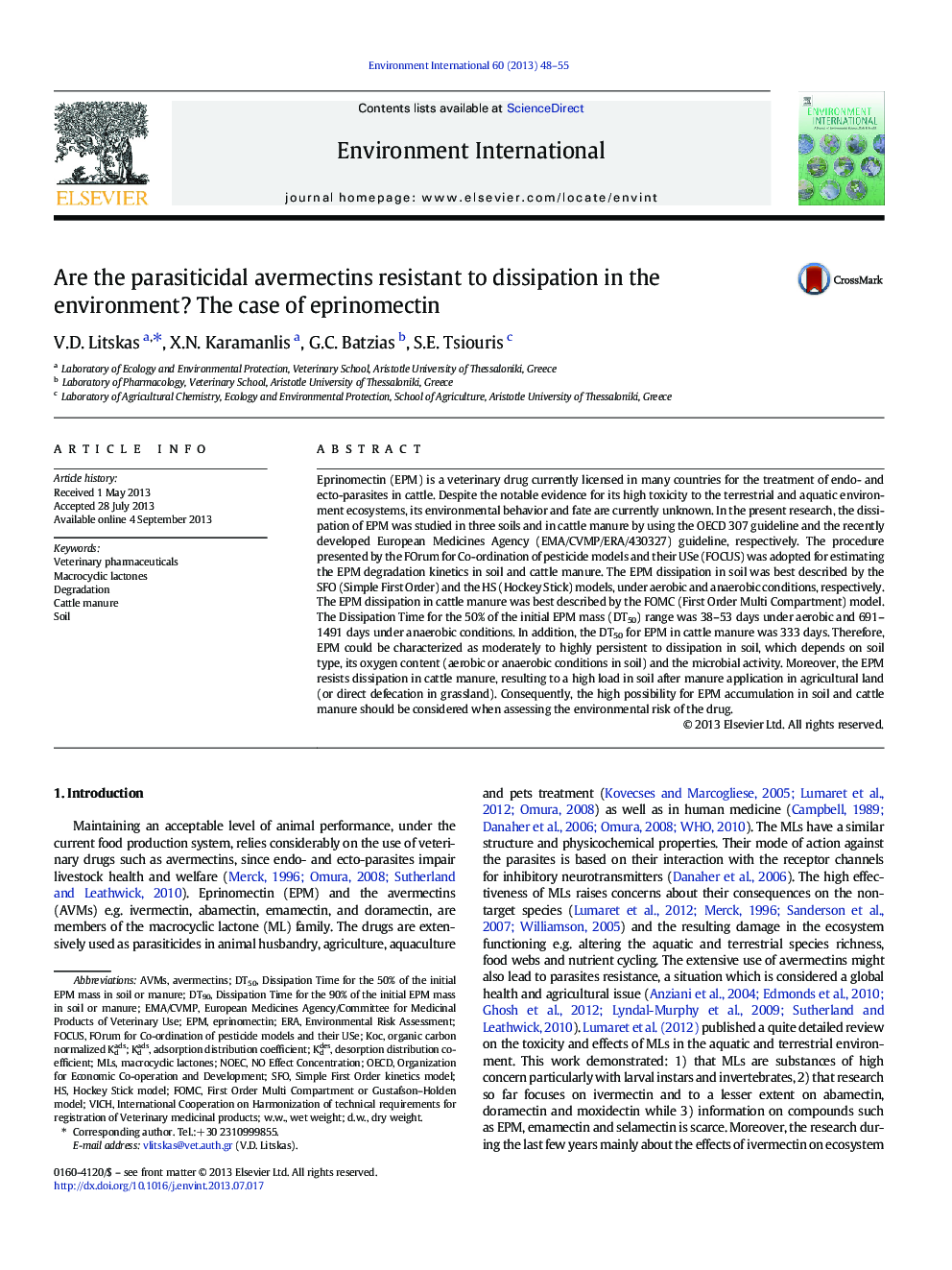| Article ID | Journal | Published Year | Pages | File Type |
|---|---|---|---|---|
| 6314179 | Environment International | 2013 | 8 Pages |
Abstract
Eprinomectin (EPM) is a veterinary drug currently licensed in many countries for the treatment of endo- and ecto-parasites in cattle. Despite the notable evidence for its high toxicity to the terrestrial and aquatic environment ecosystems, its environmental behavior and fate are currently unknown. In the present research, the dissipation of EPM was studied in three soils and in cattle manure by using the OECD 307 guideline and the recently developed European Medicines Agency (EMA/CVMP/ERA/430327) guideline, respectively. The procedure presented by the FOrum for Co-ordination of pesticide models and their USe (FOCUS) was adopted for estimating the EPM degradation kinetics in soil and cattle manure. The EPM dissipation in soil was best described by the SFO (Simple First Order) and the HS (Hockey Stick) models, under aerobic and anaerobic conditions, respectively. The EPM dissipation in cattle manure was best described by the FOMC (First Order Multi Compartment) model. The Dissipation Time for the 50% of the initial EPM mass (DT50) range was 38-53Â days under aerobic and 691-1491Â days under anaerobic conditions. In addition, the DT50 for EPM in cattle manure was 333Â days. Therefore, EPM could be characterized as moderately to highly persistent to dissipation in soil, which depends on soil type, its oxygen content (aerobic or anaerobic conditions in soil) and the microbial activity. Moreover, the EPM resists dissipation in cattle manure, resulting to a high load in soil after manure application in agricultural land (or direct defecation in grassland). Consequently, the high possibility for EPM accumulation in soil and cattle manure should be considered when assessing the environmental risk of the drug.
Keywords
Related Topics
Life Sciences
Environmental Science
Environmental Chemistry
Authors
V.D. Litskas, X.N. Karamanlis, G.C. Batzias, S.E. Tsiouris,
